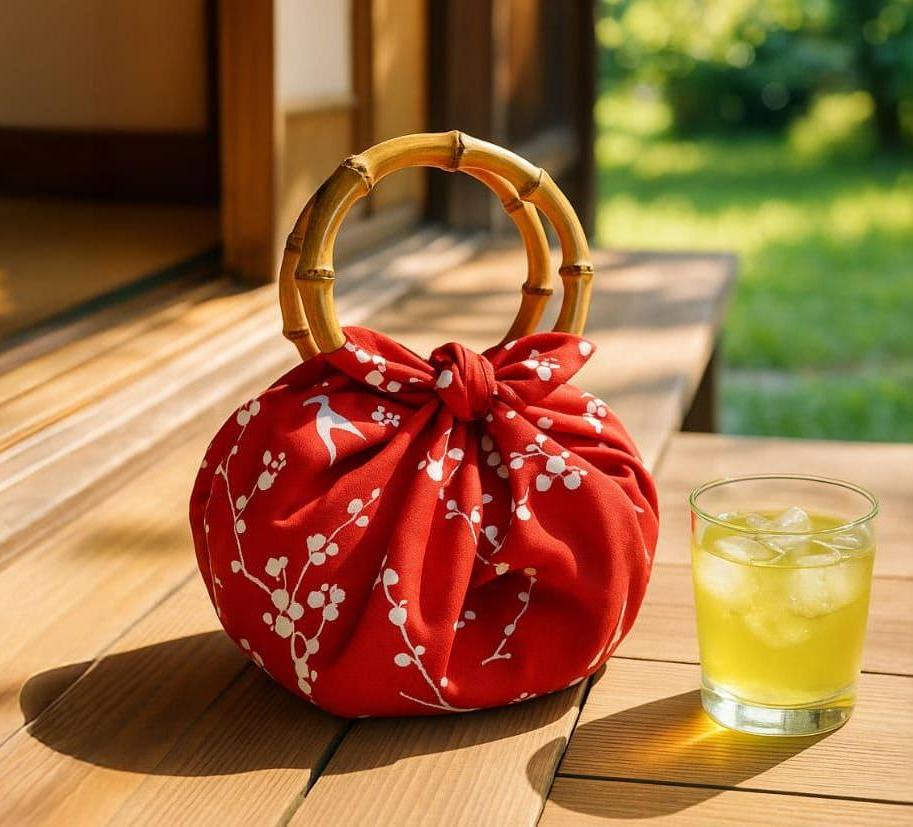Many travelers think, “If I’m coming to Japan, I definitely want to try a karaoke box.”
But if you’ve found your way to this page, chances are you’re traveling solo.
“Singing karaoke alone? That’s a bit much…”
Is that what you’re thinking?
Maybe the idea of singing by yourself in a private karaoke room feels, to you, like something a lonely mad scientist might do—silently mixing dangerous chemicals in a dark basement.
Well, not in Japan.
Here, it’s not a bizarre pastime. It’s just another form of leisure—made all the more justifiable by the magical phrase: “I’m traveling.”
Why not give it a try?
But before you do, there’s one common hurdle that often trips people up.
The membership system.
Many karaoke chains in Japan require membership.
Some won’t even let you use their services unless you’re a member—and even if they do, prices can be significantly higher for non-members.
To make matters worse, signing up often requires a Japanese ID or phone number.
It would be a shame to go all the way there, only to be told, “Sorry, you can’t use our services.”
That’s why this article is here—to show you how to enjoy solo karaoke in Japan without needing any membership.
We’ll answer all your burning questions, like:
- Is it really okay to sing alone?
- Which chains let you walk in and sing without registering?
- How do you actually enter, order, and get started?
Let’s make your solo karaoke debut as smooth (and fun) as possible.

1. Is It Weird to Do Karaoke Alone in Japan?
In many countries, karaoke is seen as a social activity—something you do with friends or coworkers.
That perception exists in Japan too, but at the same time, it’s also true that plenty of people go to karaoke alone. And in most cases, no one finds that strange.
In fact, there’s even a dedicated term for it in Japanese: “hitokara”, short for “hitori karaoke,” or “karaoke for one.”
There are all sorts of reasons people go to karaoke alone.
■ For practicing vocals (especially warmups and pitch)
Given Japan’s housing situation, singing at full volume at home just isn’t realistic.
Walls tend to be thin, and you’re always a little too close to your neighbors.
Personally, I usually keep it to quiet humming—but every now and then, I get carried away and belt something out, only to immediately regret it.
The next time I see my neighbor, I can’t help but wonder if they heard it… and my cheerful greeting turns slightly downward, eyes avoiding theirs.
■ To blow off steam after work
Sure, you might say, “Why not go with coworkers?”
But let’s be honest—blowing off steam in front of coworkers isn’t always possible.
Especially if the cause of your stress is… the workplace itself.
■ To sing whatever you want, without anyone listening
Group karaoke comes with a set of unspoken rules.
For example:
“Don’t pick too many songs that no one else knows—especially if you’re not a particularly good singer.”
It’s the karaoke equivalent of hogging a shared Spotify playlist with obscure B-sides no one’s heard of.
Or maybe it’s like being at a barbecue and having someone load your plate with nothing but burnt vegetables.
■ For people who love karaoke, but don’t like singing in front of others
This type is more common than you’d think.
It’s a bit like someone who’s usually quiet and rarely smiles—but secretly loves stand-up comedy.
You’d never guess it, but it’s part of who they are.
In short, if you want to sing on your own terms, without worrying about anyone else, hitokara is the answer.
The idea started becoming popular around 20 years ago in Japan, and surveys suggest that roughly 40% of Japanese people have tried solo karaoke at least once.
In Japan, going to karaoke alone isn’t strange.
If anything, it just makes sense.
2. How to Do Hitokara Without a Membership
2‑1. Choosing the Right Place
You want to try solo karaoke—but you don’t want to sign up for anything, show an ID, or explain your hotel address to a confused staff member.
Fair. Let’s keep things simple.
We’ve surveyed the major karaoke chains in Japan and sorted them into three categories:
- ◎ Best Picks – No membership, easy solo access, good prices.
- ✕ Not Recommended – Requires membership or charges extra for solo guests.
- ☆ Wildcard – Unusual but interesting option, if you’re feeling fancy.
Here’s the comparison:
Solo Karaoke Chains – Comparison Table
| Chain Name | Membership Needed | Solo-Friendly | Price (Weekday) | Notes | Verdict |
|---|---|---|---|---|---|
| Utahiroba | ✘ No | ◎ Yes | ★ Very cheap | No registration required. | ◎ Best Pick |
| Karaoke no Tetsujin | ✘ No | ◎ Yes | ★★ Moderate | Slightly higher price, but fair. | ◎ Best Pick |
| Manekineko | ✔ Yes (strict) | ◎ Yes | ★ Very cheap | ID and phone number required. | ✕ Exclude |
| 1Kara | ✔ Yes (strict) | ◎ Yes (solo-only) | ★★ Moderate | Solo booths only, but membership required. | ✕ Exclude |
| Jankara | ✘ No | ◎ Yes | ★★ Moderate+ | Non-member price up to 2× higher. | ✕ Exclude |
| Karaoke-kan | ✘ No | ◎ Yes | ★★ Moderate+ | 25% discount for members. | ✕ Exclude |
| Big Echo | ✘ No | ◎ Yes | ★★★ High | Mandatory drink orders, premium feel. | ✕ Exclude |
| Cote d’Azur | ✘ No | ○ Depends | ★★ Moderate+ | May charge extra for solo guests. | ✕ Exclude |
| Pasela Resorts | ✘ No | ◎ Yes | ★★★ High | Great food, luxurious rooms. | ☆ Wildcard |
■ Our Top Picks
If you just want to sing alone without paperwork, go for:
- Utahiroba – Incredibly cheap, no membership required, and no one cares if you’re solo. Their official site for visitors even has English guidance.
- Karaoke no Tetsujin – Slightly more expensive, but well-equipped, traveler-friendly, and hassle-free. Their Japanese site has store info and pricing.
■ Chains You Might Want to Avoid (This Time)
Some chains offer great prices—if you’re a member.
But if you’re just visiting Japan for a few days, these extra steps can get annoying or even block you from entering.
We recommend avoiding:
- Manekineko – Great for locals, but strict membership requirements.
- 1Kara – Amazing for hardcore soloists, but registration required.
- Jankara, Karaoke-kan, Big Echo, Cote d’Azur – All technically allow solo guests, but pricing or extra rules make them less ideal for first-timers.
■ The Wildcard: Pasela Resorts
Want to treat yourself?
Pasela Resorts is like karaoke meets luxury spa. You’ll find Balinese-themed rooms, gourmet-level food, and desserts that deserve their own photo shoot.
It’s more expensive than other chains, but if you’re after a stylish one-person karaoke night (with cake), this is the place.
Their official English site has more info and location listings.
Would you like to sing for cheap, or sing in style?
Either way, there’s a booth waiting for you—with no paperwork required.
2‑2. What to Expect: From Entry to Exit
Never done karaoke in Japan before? No worries.
Here’s how a typical solo karaoke visit goes—from walking in to walking out.
At the Front Desk
When you enter, you’ll be greeted at the counter.
Even if the staff doesn’t speak English fluently, they’re used to tourists, especially in big cities.
Here are a few simple phrases that work:
| Japanese Phrase | English Meaning |
|---|---|
| 「ヒトリです」 (Hitori desu) | “Just one person.” |
| 「1時間くらいで」 (Ichijikan kurai de) | “About one hour.” |
| 「英語の機械ありますか?」 (Eigo no kikai arimasu ka?) | “Do you have English machines?” |
In many chains, they’ll hand you a form or show you a touchscreen to select:
- Duration (30 mins, 1 hour, etc.)
- Number of people (you = 1)
- Drink options (one drink or drink bar)
- Smoking / non-smoking room
Inside the Room: Equipment & Song Selection
Once inside, you’ll find:
- A remote control or touchscreen tablet to select songs
- A TV screen with lyrics
- A microphone or two
- And usually a call button to order drinks (or ask for help)
Want English?
Most karaoke machines have an English language setting.
Look for a globe 🌐 icon, or a menu button like:
- 「言語」(Language)
- “Settings”
- “ENGLISH”
Once you switch, the interface should be mostly intuitive.
You can search by artist name, song title, or genre.
Ordering Drinks or Just… Not
If your plan includes a drink, you usually order it at the beginning (front desk or room tablet).
Some chains bring it to your room. Others let you serve yourself from a drink bar outside.
If you don’t feel like ordering anything else, that’s fine.
In solo karaoke, no one expects you to socialize, snack, or even open the door again until you’re done.
When Time’s Up: Leaving & Paying
Depending on the chain, one of two things will happen:
- Auto checkout: Some chains calculate time automatically. You leave the room, go to the counter, and pay.
- Call for checkout: Others require you to press a button in the room or call the front to request checkout.
Payment is usually at the front desk. Most places accept:
- Cash (yen)
- Credit cards (Visa/Mastercard often OK)
- IC cards like Suica or PASMO (especially in urban areas)
No need to tip—this is Japan.
If you can navigate a convenience store, you can do karaoke solo in Japan.
Once you’ve done it once, you’ll wonder what the fuss was about.
3. Things to Know Before You Go
Before you dive into your solo karaoke debut, here are a few practical tips—and one emotional one.
3-1. You might get turned away during peak hours
Most chains welcome solo customers, but during busy times (especially Saturday nights), some places prioritize groups.
If you walk in alone when it’s packed, you might hear,
“Sorry, no rooms available right now.”
Solution?
Weekday afternoons and late evenings are your golden hours. That’s when the solo karaoke pros go anyway.
3-2. No outside food allowed (usually)
Bringing your own snacks or drinks is generally not allowed, unless the place specifically says so.
Some chains offer full food menus, some just drinks. If you’re not ordering anything, that’s totally okay—but no picnics, please.
3-3. Watch your stuff when you leave the room
If you step out to use the restroom or grab a drink, be sure to take your phone, wallet, or valuables with you.
While Japan is very safe, karaoke rooms are not locked, and there’s no one watching your belongings.
3-4. Embarrassed? Get over it fast
Yes, the first few minutes might feel weird.
Yes, you might whisper your first song.
But here’s the thing: no one can hear you, and no one cares.
The faster you embrace the awkwardness, the faster you unlock the joy of yelling 2000s pop songs at full volume with zero judgment.
Solo karaoke isn’t just allowed—it’s liberating.
4. Final Thoughts
No pressure. No waiting for your turn. No pretending to like that one guy’s 12-minute progressive rock choice.
Just you, your voice, and whatever songs your heart demands.
Whether you’re here for vocal training, emotional release, or just 45 minutes of yelling into a mic because you can—hitokara is one of those uniquely Japanese experiences that’s both practical and unexpectedly satisfying.
And now, you know exactly how to do it—without membership, without hassle, and without shame.
Happy singing.
That said, karaoke is just one way to spend a night alone in Japan.
Want more ideas? Here’s a full list of surprisingly fun things you can do—just by yourself:






